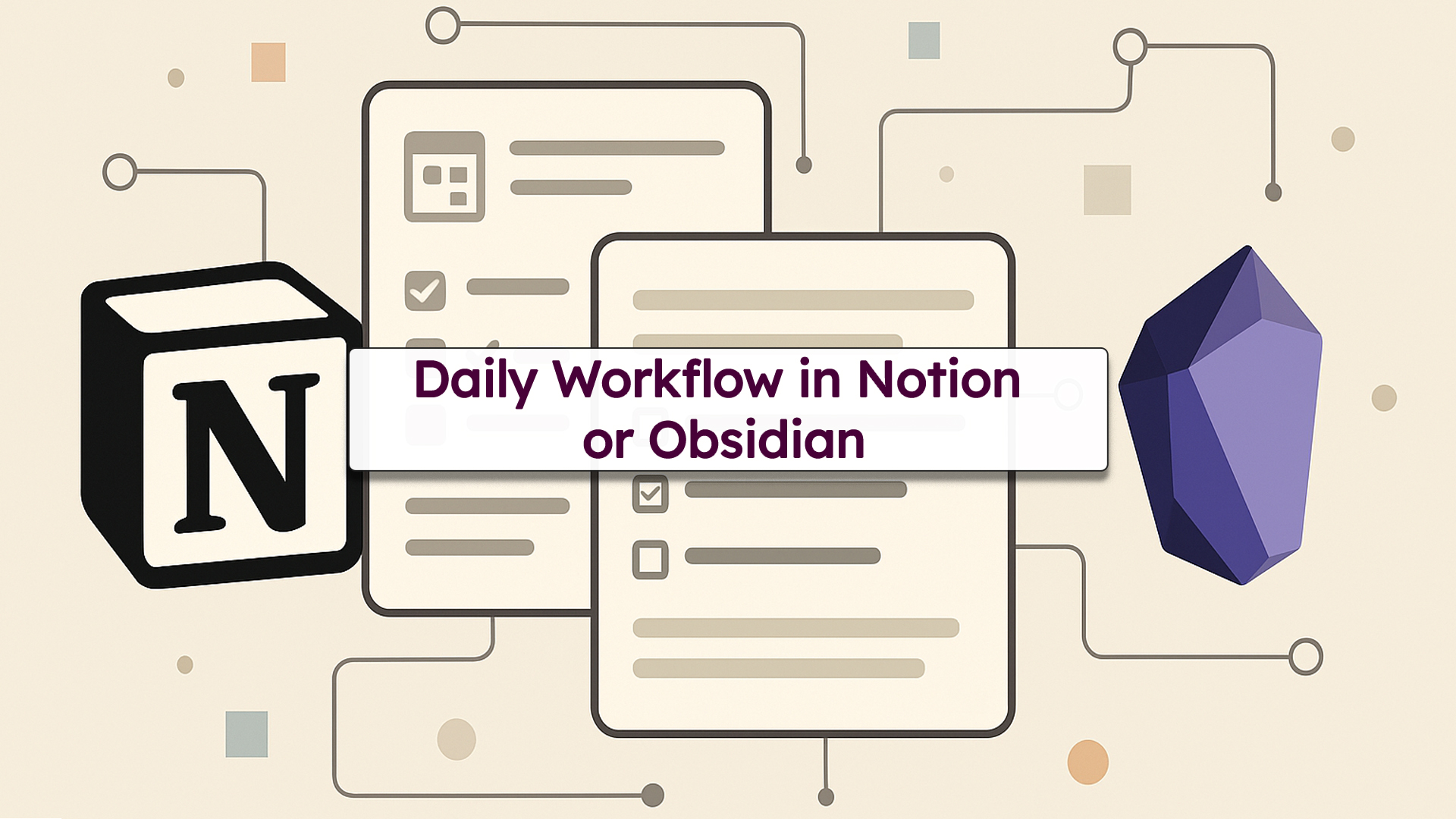Staying productive in a world full of distractions often comes down to one thing: having a system that works for you. If you’re a fan of Notion or Obsidian, you already know how powerful these tools are for organizing knowledge, planning tasks, and tracking habits. But what if you could take things to the next level with automation?
In this blog post, we’ll explore how to streamline your daily workflow using Notion and Obsidian—two tools that shine in their own right, but can become productivity powerhouses when paired with automation.
Why Automate?
Before we dive into the how, let’s talk about the why.
Automation helps you:
- Save time on repetitive tasks
- Reduce mental clutter
- Improve consistency
- Focus on deep work, not busy work
Imagine starting your day and having:
- A fresh daily note or task list already created
- Relevant links, notes, or calendar events pulled in automatically
- Reminders sent at the right time
Let’s break down how to make that happen in Notion and Obsidian.
Automating Daily Workflows in Notion
1. Use Templates with Buttons or Automations
Create a Daily Planner template that includes:
- Time-blocked agenda
- Top 3 priorities
- Habit tracker
- Journal prompt
Use a template button in Notion to generate this with one click. For more advanced automation, use tools like:
- Notion Automations (via Make, Zapier, or Notion’s API)
- Notion Calendar sync to auto-create entries based on your calendar
- Daily database filtering to show only tasks due today
Example: Use Make.com to trigger a new Notion daily page every morning at 7 AM, pulling in tasks from Google Calendar or reminders from Todoist.
2. Automated Task Management
Set up a master task database and filter it to show:
- Due today
- Overdue
- Priority items
Then, link this to your daily note. With a recurring automation (e.g., Zapier + Notion), you can create tasks based on emails, calendar events, or forms.
Automating Daily Workflows in Obsidian
Obsidian is a markdown-first app built for personal knowledge management and daily journaling. Automation here leans more toward plugins and scripts.
1. Use Daily Notes Plugin
Install the Daily Notes plugin to auto-create a new note each day with your preferred format. Then, combine it with:
- Templater Plugin – dynamic templates using JavaScript
- Periodic Notes Plugin – organize your notes by day, week, or month
2. Automate with Scripts & Tools
With Obsidian, you can use tools like:
- Templater JS snippets (e.g., auto-insert weather or quote of the day)
- Dataview Plugin to pull tasks from other notes
- Obsidian Git for automatic backup and version control
- macOS Automator / Windows Power Automate to launch your daily note or sync vaults
Advanced: Set up a cron job or use Raycast or Alfred to launch Obsidian and open today’s note at a specific time.
Which Tool Should You Use?
| Feature | Notion | Obsidian |
| Best for | Team collaboration | Personal knowledge management |
| Automation style | API/Zapier/Make | Plugins/Scripting |
| Daily notes | Templates + buttons | Daily Notes plugin + Templater |
| Data format | Cloud + blocks | Local markdown |
| Learning curve | Lower to moderate | Moderate to high (for automation) |
Final Thoughts
Whether you use Notion’s sleek interface or Obsidian’s local-first markdown flexibility, automation can help turn your system into a well-oiled machine. The key is to start small: automate one or two daily tasks, see the benefit, then expand.
Let your tools do the heavy lifting—so you can focus on what matters most.


